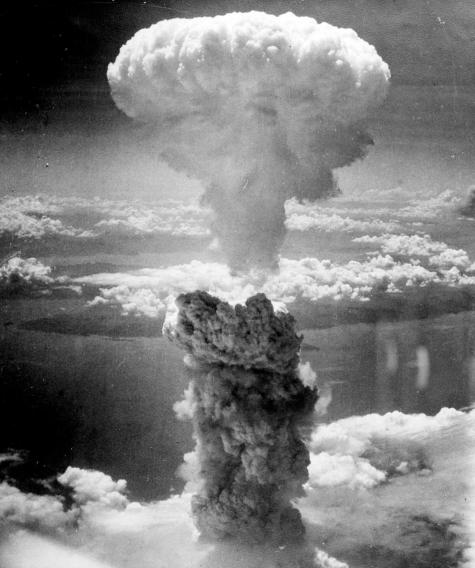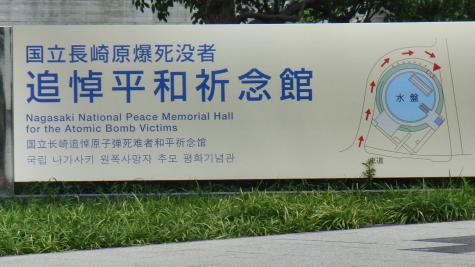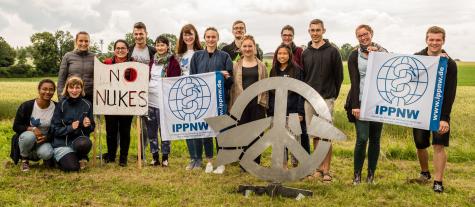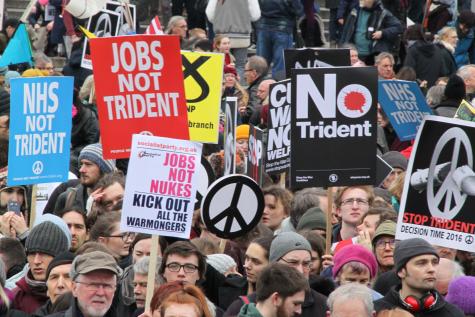NAGASAKI DAY - August 9

➡️ THE ATOMIC BOMBING OF NAGASAKI – 80 Years Since the Nuclear Holocaust
On August 9, 1945, the U.S. military dropped an atomic bomb on Nagasaki, three days after the first bomb was detonated over ➡️ HIROSHIMA. The attacks were a successful but teriffying strategy to force Japan to surrender in World War II. These horrific acts marked the first and only time atomic weapons have been used in warfare.
An estimated 40,000 people died immediately from the detonation and the resulting shock wave, heat, and firestorms. By the end of 1945, the death toll from injuries and radiation sickness had risen to approximately 70,000.
Robert Oppenheimer, the father of the atomic bomb, and Winston Churchill, the British Prime Minister at the time, considered the dropping of the second bomb both unnecessary and unjustified.
"In the past, there were so-called laws of war that made it bearable. Now we have the atom bomb, which represents the ultimate in violence." - Mahatma Gandhi
Jump straight to our resources on ➡️ Nagasaki
Explore our comprehensive guides on -
-
The Dangers & Costs of Nuclear Proliferation
-
The Nine Nuclear States
-
Anti-Nuclear Weapon Campaigns & Organisations
The bombing of Nagasaki and Hiroshima, ultimately led to Japan's surrender on August 15, 1945, and thus to the end of World War II. However, the devastating consequences continue to resonate today as a poignant reminder to humanity of the destructive power and devastation that nuclear weapons cause.
Although the disaster contributed significantly to global awareness of the dangers of nuclear weapons, the effects of the bomb were catastrophic. Approximately 44% of the city's infrastructure was destroyed, along with 35,000 buildings, which were burned or severely damaged.
Many of the survivors, known as Hibakusha, suffered severe burns, injuries, and long-term health effects from extreme radiation exposure. The ionising radiation led to cancer in numerous survivors, particularly leukaemia and thyroid cancer. Birth defects and genetic deformities persisted for years after the attack. Many Hibakusha also then went on to suffer social exclusion and stigmatisation.

Commemorations & International Response
Every year on August 9, survivors, their families, officials, peace activists, and nuclear disarmament advocates from around the world gather to commemorate the victims of Nagasaki. The Nagasaki Atomic Bomb Museum and the adjacent Peace Park mark the exact site of the explosion. This area has become a central site of remembrance, attracting thousands of visitors each year.
A minute of silence is observed, wreaths are laid, messages of peace are read, and the call for a nuclear-free world is reaffirmed. Today, survivors and descendants continue to demand compensation and more education on the horrors of both colonial rule and the use of atomic bombs.
The international community continues to support Nagasaki in their quest for peace and nuclear disarmament. Like Hiroshima, the city of Nagasaki is a member of the Mayors for Peace organisation, which promotes nuclear disarmament worldwide. The United Nations also regularly sends representatives to express its solidarity and reaffirm its commitment to nuclear disarmament.
The U.S. stance on the bombings and remembrance is controversial. To this day, there has been no official apology. Many U.S. governments have historically justified the attacks as a military necessity to end World War II quickly and avoid further casualties. Civil society groups and historians in the U.S. are still critically examining these claims.
A symbolic milestone was the visit of President Barack Obama to Hiroshima in 2016, marking the first time a U.S. president had done so. Although Obama did not issue a formal apology, his visit signalled recognition of suffering caused by the attacks and the need for a nuclear-weapon-free world.
The Forgotten Korean A-bomb Victims
Over 20,000 Koreans who had been brought to Japan as forced labourers under Japanese colonial rule also died when the atomic bombs were dropped. In Hiroshima, they accounted for 10% of the death toll. Many worked in munitions factories, shipyards, or mines under dangerous conditions. Among the victims were Korean women who were forced into sexual exploitation in military brothels as so-called "comfort women." Their exact number has never been quantified, but estimates are around several thousand. These people were at the bottom of society - disenfranchised, racially discriminated against, and often silenced in both countries after the war.
Only since the 1990s has public pressure grown to make their history visible. In Hiroshima, a special memorial in the Peace Park has commemorated the Korean victims since 1970. It was only officially recognised by the mayor in 2015, after it had previously been erected by the Korean community without official permission.

Nuclear Weapons Treaties & NGOs
The Nuclear Non-Proliferation Treaty (NPT) entered into force in 1970. Today, 191 states are signatories, including the five official nuclear powers - the U.S., Russia, China, France, and the UK. The NPT obligates nuclear-weapon states to disarm gradually, while prohibiting other states from developing or acquiring nuclear weapons.
The Comprehensive Test Ban Treaty (CTBT), which was established in 1996, prohibits the testing of nuclear weapons. It has been signed by 185 states to date, but has not yet entered into force because important countries such as the U.S., China, India, and Pakistan have not ratified it. In 2021, the Treaty on the Prohibition of Nuclear Weapons (TPNW) entered into force. It completely prohibits the possession, use, and development of nuclear weapons. It has been ratified by 70 countries to date. None of the nuclear-weapon states are part of the TPNW.
Organisations like the International Atomic Energy Agency (IAEA) monitor the civilian use of nuclear energy and ensure that no undercover nuclear weapons programs are developed. Peace campaigns like ICAN (International Campaign to Abolish Nuclear Weapons), IPPNW, and CNDUK advocate for a total nuclear weapon ban.

Lessons from Nagasaki
Rising geopolitical tensions make nuclear disarmament efforts even more urgent. According to the Stockholm International Peace Research Institute (SIPRI), in 2024, nuclear states possess an estimated 12,500 atomic warheads - and the number is rising as modernisation programs in most countries are prioritised.
Of particular concern is friction between Russia and NATO, the escalating situation between Pakistan and India in Kashmir, and the recent dispute over Iran's nuclear program involving Israel and the U.S. These examples all demonstrate how quickly nuclear threats can once again become part of war rhetoric. The new nuclear arms race has begun.
It is more crucial than ever before to regulate and abolish nuclear weapons. They pose an existential threat to humanity – a single nuclear war could kill millions instantly and endanger global survival through radioactive contamination, climate impacts, and famine.
Protection against such a scenario can only succeed if all states implement confidence-building measures, renew arms control, and commit to international disarmament treaties.
Nagasaki and Hiroshima remain reminders of the catastrophic nature of nuclear weapons and how important it is that they are never used again.
Experts are welcome to share their knowledge and feedback with us.
Author: Maximilian Stark 16.07.25, edited and translated by Rachael Mellor, 23.07.25 licensed under CC BY-SA 4.0
For further reading on Nagasaki see below ⬇️